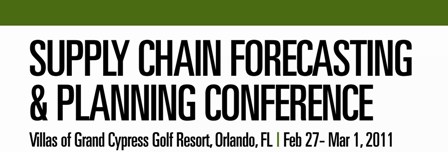Sometime during the 20th century sales forecasting went from being a necessary part of someone’s job to being someone’s entire job. Sales forecasting, has made the move from being only 1 step in the inventory/production analyst’s planning to a forecaster’s full time position. This is definitely good news for those of us who wanted to do sales forecasting full time! (Did we really?) I wonder who blamed whom for a bad forecast back in those days?
Today, forecasting is a function handled in many companies by specially trained experts. Providing the forecast or maintaining a forecast is now largely determined by management. An unbiased forecast is often used to provide an indication if we’re keeping pace with the business plan. And if we’re not, what demand shaping activities can we do to improve or damper the forecast where needed. However, a large part in preparing a final forecast to drive supply chain operations is first developing an understanding of the dynamics taking place in the marketplace from consumer to buyer. By examining the real causes of buying chain behavior and factors, and incorporating this information in the consensus forecasting process, one has a better chance of developing a better forecast in the future, as well as increasing credibility.
Where available, POS data is at least a partial leading indicator of the future. It can be considered a mixed blessing to have the benefit of this data in forecasting since the data can be valuable. However, we are forecasting what the customer intends to buy, and that does not have the inherent smoothing effect of a large number of consumers. A customer order can be based on one person’s or group’s reaction to a number of internal factors that may not be apparent to the forecaster. So, an important area of study for any forecaster must be the underlying factors in the POS data and reconciling POS forecasts with customer order forecasts. Also, there are a number of ways to use POS data as an input to shipping forecasts, but none of them work perfectly.
Furthermore, the impact of economic forces from global to individual behavior is a topic that holds a lot of information to study, and we never get our arms around the whole thing. However the more we can build an argument for a forecast that is based on valid assumptions, and identify the risks, the better chance we have for an optimal planning outcome.
Join me in Orlando at IBF’s Conference to hear my talk on, “Practical Forecasting and Planning in a Volatile Marketplace”
Kenton Burki
Manager – Inventory and Forecasting
Jockey International, Inc.
Hear Kenton Speak at




